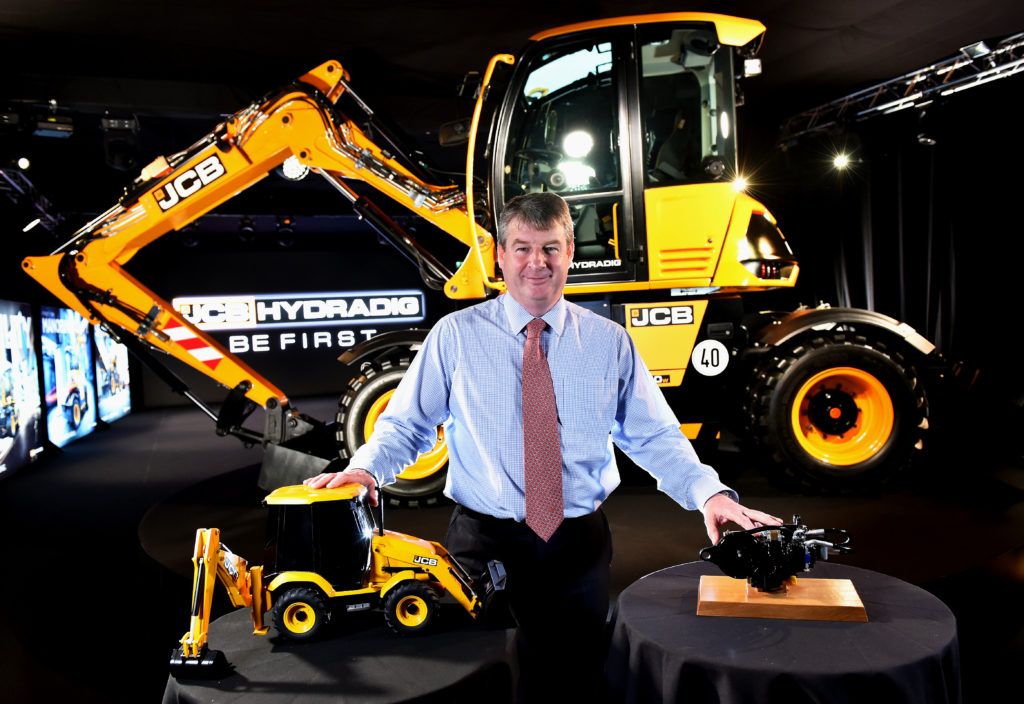Brian Mormino, Cummins‘ executive director of technical and environmental systems, explains how sustainability isn’t just good for the planet, but good for business
It’s no secret that manufacturers have operated in a highly regulated global environment for many years, and regulations have long factored into efforts by innovative companies to design and develop products to meet the needs, wants and expectations of the customers they serve.
However, in looking back over the course of the last several years, the number of global regulations and amendments have increased dramatically. Regulators are demanding immediate action to address greenhouse gas (GHG) emissions and climate change, They want certain substances removed from product offerings altogether, and the industry is expected to shift toward a lifecycle approach to product design and development efforts.
If one thing’s for certain, it’s this: manufacturers today need to be willing and able to ask and – perhaps more importantly – answer difficult questions about society, a sustainable future and the world around us all.
We have to drive ourselves to open our eyes, look at all the factors going on around us, and understand where we need to be focusing our time, effort and resources. All of the issues we face today certainly have an environmental slant, but they impact us in so many different ways.
It’s critical for the industry to ready itself for a world in which equipment end users not only demand, but expect, manufacturers to do their part to – for example – reduce GHG emissions or be lead-free. What should a company do to prepare? How should it respond to such a dramatic shift in customer needs, wants and expectations?
Difficult questions often yield complex answers. Such is the case when it comes to queries related to sustainability issues impacting the manufacturing industry today, tomorrow and in the years to come. With that fact in mind, here are five of the most notable issues contributing to discussions about sustainability in the manufacturing industry right now:
- Pollution is an ongoing concern, especially as more people move to urban locations.
- Unprecedented changing climate impacts lives and livelihoods.
- Water scarcity threatens communities and economies.
- Current global waste management approach does not work.
- Resource consumption trends require new thinking.
These are significant trends, trends that definitely impact our business, they definitely impact our stakeholders, and they are also impacting the policy and regulatory environment.
Over the last 15 years or so, Cummins has become very serious about sustainability. And the power of sustainability, I believe, is all about trying to go from a reactive state to a proactive state.
Taking a proactive approach to sustainability
Manufacturers can go from a reactive to proactive state in four simple steps:
1 – Measure and prioritise
Data is critical to making informed decisions and prioritising how to proceed. Being able to focus on what is important is critical to determining potential impacts.
Part of our impact is what we buy, the impact it makes, and then the impact to make it. It goes all the way through to when our products are in use. There’s an impact from our customers using our products. And when you take that broad perspective, it really changes where you should be focusing your attention.
2 – Commit and act
Don’t let data – or any other factors – prevent you from taking action and setting commitments. Sometimes you need to make the commitment and figure it out later.
In 2006, Cummins established its first-ever public environmental goal, one which called for a reduction in GHG emissions from its facilities. It was a bold goal, and one company officials weren’t exactly certain how to go about achieving.
But we knew it was the right thing to do. We did some benchmarking and collected some data, and we were comfortable enough with the idea that this was an important focus for us. Ultimately, we just needed to get on with it. And by telling the world about it, by saying ‘Here’s what we’re going to achieve,’ it would hold us even more accountable and focus even more of our resources.
The end goal is to begin to internalize environmental externalities by making sustainability a part of business operations as a whole. We have to drive ourselves to open our eyes, look at all the factors going on around us, and understand where we need to be focusing our time, effort and resources. All of the issues we face today certainly have an environmental slant, but they impact us in so many different ways.
3 – Partner and learn
It’s impossible to accomplish anything by limiting activities to those occurring within an organization’s four walls. Reach out and learn about the issues affecting them organizationally and the issues they are currently being forced to deal with on a societal level.
4 – Refresh and build
Circle back, make additional commitments, foster additional partnerships and build on previous successes.
We’re working with our customers to optimize how they are going to use our products. By that we mean to reduce greenhouse gas emissions, which saves them fuel. This is the journey we’ve been on. But as I’ve mentioned, when you commit, you take action. You start partnering, and you start learning. Then you have to refresh and rebuild.
Planet 2050
Perhaps the most difficult question organizations grapple with related to sustainability is where, exactly, to start. And according to Mormino, two factors are at play when trying to come up with a definitive answer: foundation and belief.
What is the culture and approach that exists within your organization? And with that foundation comes the belief. And the belief is – when you look at the significant trends and issues around you – do you believe you can be part of the solution, for yourself and your organization, but also for society overall?
2019 was the 100th anniversary of Cummins, and company officials marked the occasion by asking themselves the following question: If we’ve been around for 100 years, what do we need to do to stay around for 100 more?
Cummins eventually established an initiative known as Planet 2050, which serves to provide a framework for establishing goals and aspirational targets related to sustainability that extend out to the middle of this century. The initiative helps provide a roadmap for the company as it attempts to answer the questions “Where are we going?” and “What do we want to do?”
The initiative is built around the following aspirational targets:
- Communities are better because we are there.
- A net positive impact in every community in which we operate
- Near-zero local environmental impact
- Doing our part on climate change and emissions.
- Customer success powered by carbon-neutral technologies that address air quality
- Carbon neutrality and near-zero pollution in Cummins facilities and operations
- Using natural resources in the most sustainable way.
- Nothing wasted
- Use materials again for next life
- Reuse water and return clean to the community
These aspirations, while strong and significant, they are achievable when you start to think about additive manufacturing, or you start to think about fuel cells. There are a variety of ways where you need to get out of your comfort zone and envision that world. However, in recognising that 2050 is a ways out, you have to back it up. And that’s exactly what we did.
With that in mind, Cummins established eight specific goals the company should achieve by 2030:
- Reduce greenhouse gas emissions from facilities and operations by 50 percent
- Reduce scope 3 absolute lifetime greenhouse gas emissions from newly sold products by 25 percent
- Partner with customers to reduce scope 3 greenhouse gas emissions from products in the field by 55 million tons
- Reduce volatile organic compound emissions from paint and coating operations by 50 percent
- Create a circular life plan for every part to use less, use better, or use again
- Generate 25 percent less waste in facilities and operations as part of revenues
- Reuse, or responsibly recycle, 100 percent of packaging plastics and eliminate single-use plastics in dining facilities, employee amenities and events
- Reduce absolute water consumption in facilities and operations by 30 percent
Emphasising collaboration
An initiative like Planet 2050 doesn’t stand a chance of being successful without adopting a stakeholder model designed to help others – both inside and outside of Cummins – embrace the long winding road toward progress and success.
That starting point is very important, that foundation, that belief. It requires lifting all of stakeholders up and looking for value for everyone involved.
Stakeholders include:
- Employees
- Communities
- Suppliers
- Customers
- Shareholders
Having this stakeholder approach, and looking for value for all, it’s just critical. No manufacturer is poised to get anywhere by going it alone. Successful collaboration is absolutely crucial to navigating an ever-evolving regulatory environment and making real, substantial change in the world.
These trends we’re seeing, they’re not just ‘out there’ in the world. They are challenges to our industry, and to all of us. It’s easy to be overwhelmed, but you need to think to yourself, ‘Who are we, and what can we do by working together?’ Because, in doing that, we can do well for our businesses, our employees and our planet.





